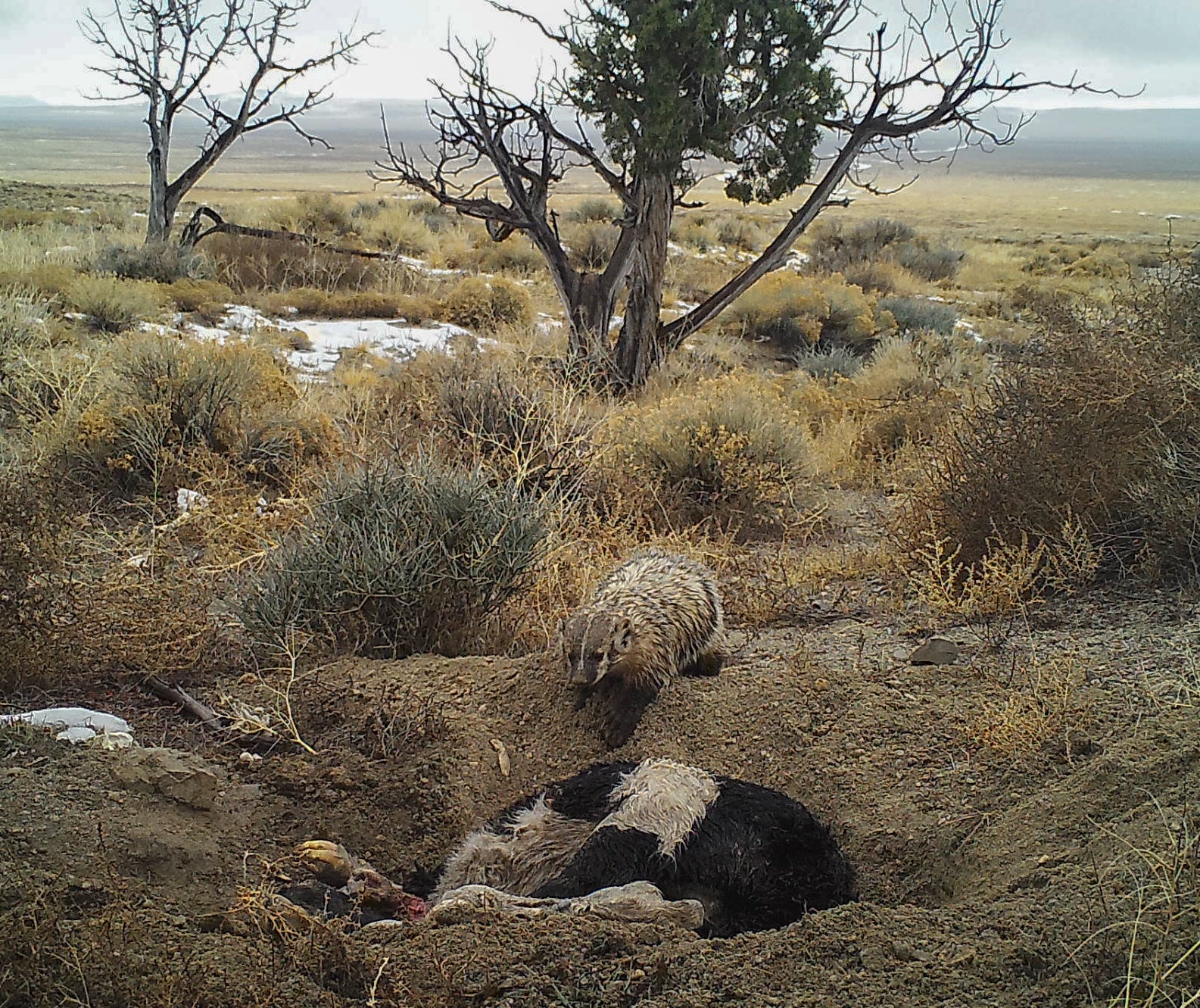Badger caught on camera burying cow carcass in world first
'Watching badgers undertake this massive excavation ... is impressive'
Your support helps us to tell the story
From reproductive rights to climate change to Big Tech, The Independent is on the ground when the story is developing. Whether it's investigating the financials of Elon Musk's pro-Trump PAC or producing our latest documentary, 'The A Word', which shines a light on the American women fighting for reproductive rights, we know how important it is to parse out the facts from the messaging.
At such a critical moment in US history, we need reporters on the ground. Your donation allows us to keep sending journalists to speak to both sides of the story.
The Independent is trusted by Americans across the entire political spectrum. And unlike many other quality news outlets, we choose not to lock Americans out of our reporting and analysis with paywalls. We believe quality journalism should be available to everyone, paid for by those who can afford it.
Your support makes all the difference.A badger has been filmed burying a cow by itself in the Grassy Mountains of Utah.
Astonishing footage captured by a camera trap shows the badger excavating a large hole to contain the remains of a calf carcass in behaviour never witnessed before.
Badgers were known to bury caches of food, such as mice and rabbits, and to scavenge meat from dead animals, but no one had thought they would take on a body that was about four times heavier than they were.
The researchers said that by burying the bodies of fallen stock badgers may provide a service for ranchers as this would help to stop the spread of disease.
Ethan Frehner, lead author of a paper about the discovery in the journal Western North American Naturalist, said: “This is a substantial behaviour that wasn’t at all known about.

“Watching badgers undertake this massive excavation around and underneath is impressive. It’s a lot of excavation engineering they put into accomplishing this.
“They are an enigmatic species. A substantial amount of their lifetime is spent either underground or a lot of nocturnal behaviour, so it’s hard to directly observe that.”
Fellow researcher Evan Buechley, who is studying for a PhD, originally staked out seven dead calves with camera traps in the hope of finding out more about vultures and other carrion birds.
He went to check on the carcasses after a week to discover, to his disappointment, that one had gone missing.
“When I first got there I was bummed because it’s hard to get these carcasses, to haul them out and set them up,” Mr Buechley said.
“I thought ‘Oh well, we’ve lost one after a week.’”
Thinking a mountain lion might have dragged it away, he looked around the area but found nothing so he decided to look at the camera trap.
“Right on the spot I downloaded the photos … We didn’t go out to study badgers specifically, but the badger declared itself to us,” he said.
After digging the hole and covering over the calf’s body to keep it safe from other scavengers and keep the meat for longer – “like putting it in the fridge,” Mr Buechley said – the badger sat on top of its work for a moment and seemed to stare straight at the camera.
“Not to anthropomorphize too much, but he looks like a really, really happy badger, rolling in the dirt and living the high life,” Mr Buechley said.

And it had good reason to be pleased with itself.
“A large dead ungulate can provide a ton of resources. So far on the carcasses we've put out, we've had turkey vultures, golden eagles, many ravens, bobcats, kit fox and coyote, so there's a lot of animals that could be using this resource, and the badger just monopolises it,” Mr Buechley said.

Join our commenting forum
Join thought-provoking conversations, follow other Independent readers and see their replies
Comments